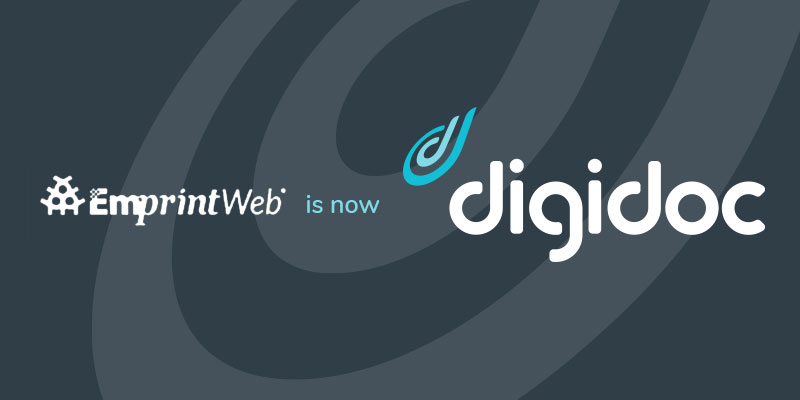Best Ways to Earn CEU Credits

The HIM profession is always changing, and it’s important to stay on the pulse of what’s happening in order to grow in your profession. One way to do this is by keeping current with your continuing education units, or CEU credits. Not only will they help you advance your career, but they’ll also equip you with the most up-to-date technology, trends, and tips that will put you on the leading edge of patient care.
So What Is a CEU Credit Exactly?
Also called continuing education credits (CECs), CEU credits are post-secondary educational credits that you can earn to deepen and strengthen your professional knowledge. Offered across industries in just about every healthcare sector, they’re an excellent way to ensure that professionals stay on top of industry changes while also expanding their skillset. They are often required for physicians to keep their license, or other professionals to maintain certifications. In the HIM field specifically, continuing education courses keep professionals credentialed. They provide critical information about the latest ways to combat proliferating cyber attacks, optimize EHR technology, and harness big data and analytics, while providing valuable foundational information to refresh HIM certifications.
Related: 6 Major Healthcare Information Management Challenges (and What to Do About Them)
AHIMA CEU Credit Process
Since the American Health Information Management Association (AHIMA) is the leading HIM association providing CEU credit opportunities, it’s helpful to know their process. To maintain your CCA®, CCS®, CCS-P®, RHIT+®, CHPS®, CHDA®, CDIP®, or RHIA® credentials through AHIMA, you’ll engage in a recertification cycle lasting two years. The recertification starts the day you pass the exam. Your circumstances may be different if you took an exam as an early tester or if you’ve accumulated more than one credential; you can see your CEU Center for your specific recertification cycle. Any CEU credits you earn must relate to the HIM field as presented in the HIM domains in order to count as credits; they must also be completed within your recertification cycle.
You must adhere to certain coursework requirements. The AHIMA stipulates that 80 percent of all CEU credits must be within the HIM domain. The remaining twenty percent can be devoted to CEU programs that do not cover HIM domains, but are still relevant to the credential holder’s professional role. For the twenty percent you can choose from:
-
Educational programs teaching topics relevant to HIM
-
HIM relevant topics that you publish and present
-
Independent study activities related to the HIM profession
-
AHIMA exam item writing
-
Overseeing and participating in directed clinical practice on behalf of CAHIIM-accredited programs
-
Facilitating for an AHIMA Access Community
-
Activities defined by the Certification Guidelines for approval of CEU programs for state, local, and regional HIM associations
-
Exceptional events recognized by CCHIIM
You can find more about educational activities in AHIMA’s Recertification Guide.
How Are CEU Credits Calculated?
CEUs are calculated at .5 CEUs earned for every 30 minutes of participation. Here’s what that looks like:
Recertification Requirements and Costs
Here’s how these credits translate into credentials. If you have earned one AHIMA credential, you must get 20 or 30 CEUs per recertification cycle:
|
If You Have A(n)... |
You Must Earn... |
|
CCA®, CCS®, CCS-P®, or RHIT+® |
20 CEUs |
|
CHPS®, CHDA®, CDIP®, or RHIA® |
30 CEUs |
This translates to the following costs: With one credential the recertification fee is $218. With more than one credential, the first recertification fee is $218 and each additional certification is $50.
How Can You Obtain CEU Credits Without Breaking the Bank? Or Your Calendar?
There are some smart ways to save money and time when earning CEUs. To save money, you can:
- Become an AHIMA member: You’ll pay discounted recertification fees biennially.
- Join AHIMA as a student: Membership costs are just $49 if you are a first time student and $109 after that, so it makes sense to take advantage of this membership if you are eligible. You can also save up to 20 percent on textbooks, certification exam prep tools, certification exams, and events.
- Apply for an AHIMA Foundation scholarship: If you’re currently enrolled, and you’re an outstanding health information professional pursuing associates, bachelor’s, master’s, or doctoral degrees in health information management (HIM) or health informatics (HI), you’re eligible.
- Ask your employer for help: See if your employer will cover the costs for your credits, whether you earn them through a class, educational activity, live event, or other program.
- Take online classes: Many of the online classes are priced lower than in-person classes, and you can avoid the commuting costs as well.
Looking to save time while you collect credits? You can:
- Take classes during the weekends: This helps you avoid taking time off from work.
- Take online classes when they are offered: In addition to saving money, this saves you the travel time. It also lets you fit classes in between the nooks and crannies of your schedule.
Earning CEU credits not only propels your career forward, but lets you interact with more career professionals, hear from thought leaders, and stay on the pulse of the industry. For more information about AHIMA’s programs look here.
With continuing education, you can maintain a continued edge in your career.
Related Articles

Six Major Health Information Management Challenges: How Document Management Software Can Help
Sep 10, 2024
Managing health information is never an easy task, no matter the size of your healthcare organization. Data can quickly pile up, and whether you’re st...

Tools You Need to Scale Your Healthcare Facility
Apr 19, 2024
The healthcare industry is constantly changing, and as practices grow both organically and through acquisitions, it can be challenging to keep up with...



